Much more than just a recipe, in this post we’ll go in to what steps you need to complete to ensure you’ll get the best tasting steak. We also review many of the benefits of eating beef.
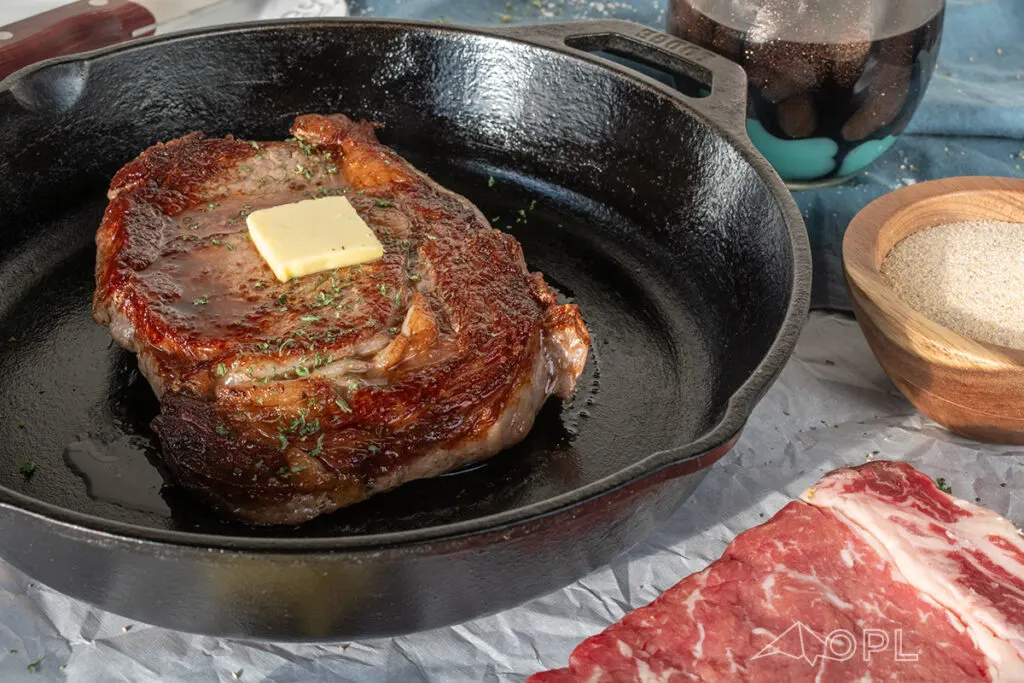
Cast Iron Benefits
There are so many benefits with using a cast iron skillet, we even wrote a blog post on why you need a cast iron skillet. If you have a flame stovetop and a cast iron skillet, you’ve got it all figured out. Now is the time to make those two elements work for you by consistently eating steak.
What are the benefits to eating beef?
While there’s a lot of controversy over consumption of red meat, the data holds its own in defense of just how incredible beef is for human consumption. Let’s review:
Causation Studies & Beef
There are no causation studies in humans showing red meat leading to health problems. However, there are correlative studies in relation to red meat consumption leading to health problems. In this post: The Stupidity of an Anti-Meat Study Summed Up we review exactly why studies like this are faulty and misleading.
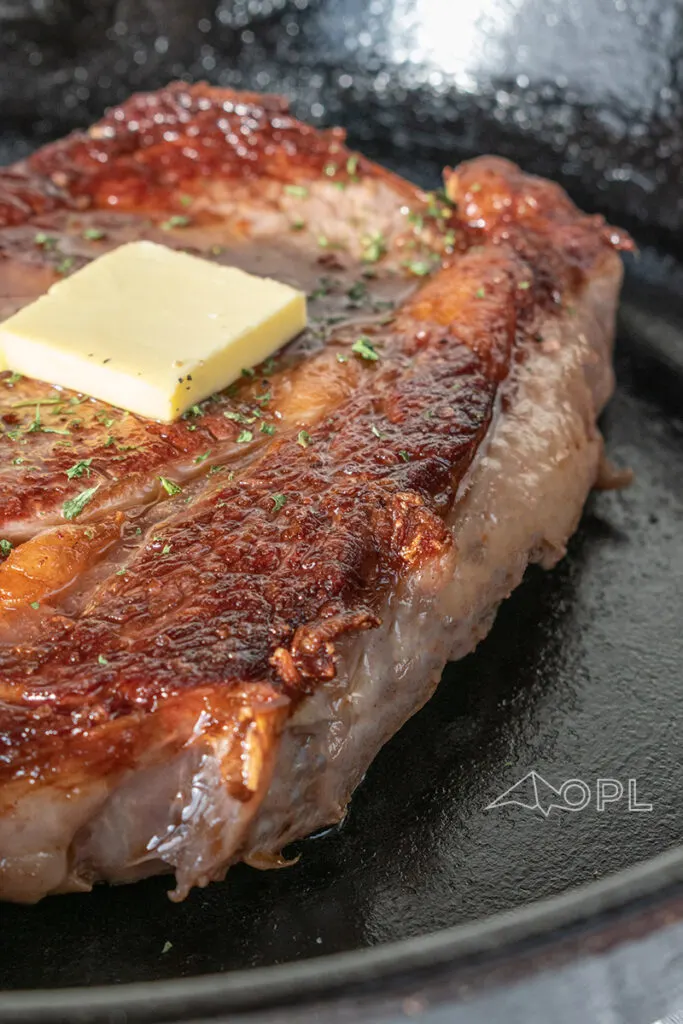
What about Red Meat & Saturated Fat?
We’ve compiled a very interesting look at the history of the vilification of saturated fats. This article: The History of Saturated Fat in America is an indictment of “science” funded by industry, leading to catastrophic health implications. Check it out:
A Review of the Health Benefits of Beef
We’ve gone in to great detail in relation to all the benefits of eating ruminant meats like beef in this post: Beef Benefits (Why is Beef Healthy?) Here’s a review of what’s found in that post:
In beef, you get: L-Carnitine, Glutathione, Phosphorus, Zink, Calcium, Copper, Iron, Magnesium, Manganese, Potassium, Selenium, Creatine, Fatty Acids, Conjugated Linoleic Acid, Vitamin B12, Vitamin B3, Vitamin B6, Vitamin B2, Vitamin B5, Carnosine, and protein.
Combined, the nutrients found in beef help to provide:
- Assistance in transporting fats into our mitochondria for burning.
- Improvements with fasting glucose levels and the overall cholesterol profile.
- Prevention of unnecessary illness.
- Increased longevity.
- Reduction of chronic disease outcomes.
- A stronger immune system.
- Heart disease risk reduction.
- Support for neurological function.
- Improvement of sleep cycle and circadian rhythm.
- Improvement in mood and reduction of severe depression.
- Assistance in the growth of lean muscle mass.
- Protection from Anemia.
- Regulation for inflammation and improved healing.
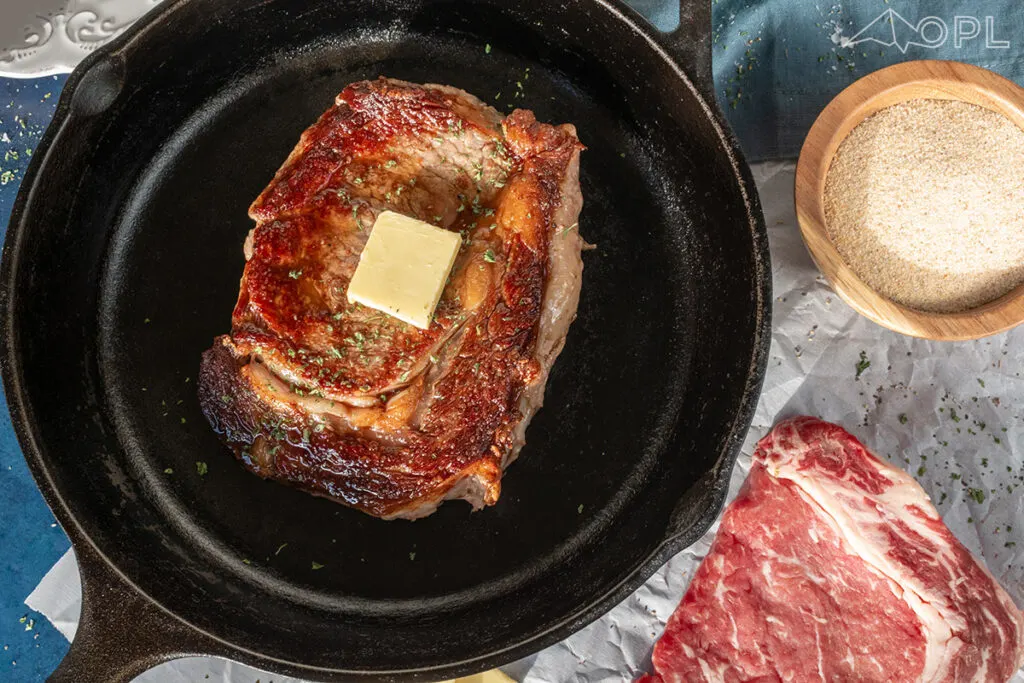
3 Tips for the Perfect Steak
A lot of people eat overcooked ruminant meat that looks almost gray. That’s disgusting and if you’ve had that before and don’t like steak or wild ruminant meats, we can’t blame you! Steak tastes better when you properly season it, when it’s cooked rare/medium rare, and when you induce the Maillard reaction.
What is the Maillard Reaction for Steak?
Maillard is pronounced: “my yard” here in America (in english). This chemical reaction is not just for red meat, however, with red meat – it’s essential for maximum enjoyment.
Perfect Steak Maillard Reaction Defined
The Maillard Reaction is the chemical reaction taking place with the meat when the proteins are heated to a high enough temperature causing a “browning” – not burning. The Maillard Reaction is a chemical reaction during cooking that happens between amino acids, sugars and the meat’s natural enzymes. The 3 requirements to fully react are heat (over 310 degrees), moisture (the beef must be relatively dry, with limited water), and time.
If you’re going to attempt making steak on a nonstick pan, don’t. You may ruin the pan and it won’t create the best result. In fact, just donate your non stick pans and go cast iron.
Step by Step Maillard Reaction Process for Steak
Dry Steak & Bring Room Temp
If you have the time, take your steak, dry it as much as you can (we just use paper towels) and let it get to room temp. This may be 30 minutes, it may be hours – this is up to you. Some even like to let it dry outside the packaging in the fridge overnight too.
Proper Steak Seasoning
While your steak is coming to room temperature, season it generously on both sides. You can use any high-quality sea salt or kosher salt for this step, massaging it into the meat to enhance flavor.
High Heat Cast Iron
On high heat, get your cast iron HOT! When the cast iron is smokin’ hot, add bacon grease.
Rare / Medium Rare
Now that you’ve dried the steak, seasoned it, and your skillet is as hot as it gets, throw the steak on and let it sear – when the steak develops a golden brown crust, flip it and get the same reaction on the other side.
Using a probe thermometer, check the internal temperature of the steak. I prefer 120 degrees fahrenheit.
Let the Steak Rest Prior to Eating
Let the steak rest for about 5 minutes prior to cutting in. When you do this you encourage the juices to even re-distribute, and also allow constricted muscle fibers to relax.
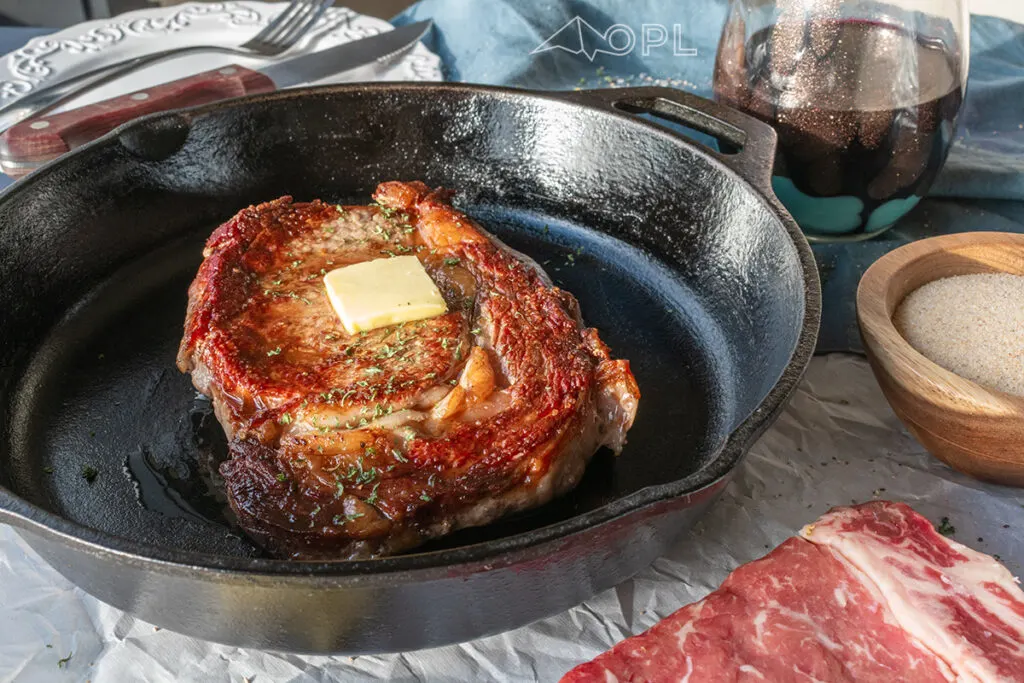
Best Steak Tips Reviewed
As written above: Steak tastes better when you properly season it, when it’s cooked rare/medium rare, and when you induce the Maillard reaction.
- Dry, Room Temp Prep with Adequate Seasoning
- High Heat Cast Iron (quick) Sear with Bacon Grease to an Internal Temperature of 120 degrees
- Let Sit for Several Minutes (then Enjoy)
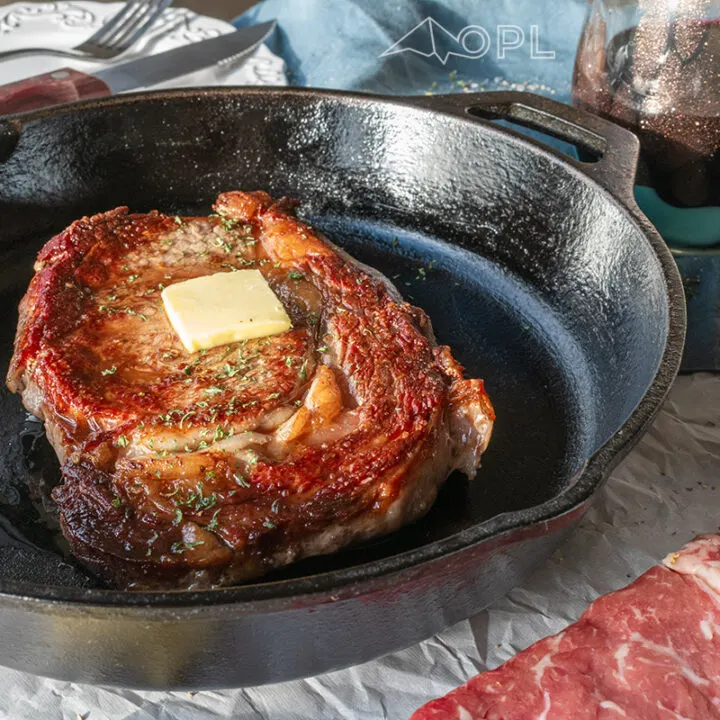
Cast Iron Steak
Ingredients
- 1 Ribeye Steak
- 1-2 Tbsp Bacon Fat/Grease
- Salt
- 1-2 Tbsp Butter (use ghee or omit altogether for Whole30)
Instructions
- Choose a cast iron skillet that is large enough for your steak to have about an inch of space all the way around so that it won't touch the sides.
- Over high heat, add the bacon fat to the skillet until it is shimmering and very hot, about 3-4 minutes.
- While the skillet is heating up, thoroughly dry the steak and coat all sides with Savory Salt.
- Place steak in the skillet and do not move it. This allows the steak to get that perfect sear. After about 3-4 minutes, flip the steak and sear the other side. Monitor the temperature with an instant-read thermometer (we prefer digital for accuracy) and remove from heat when the internal temp is 120º.
- Place butter on a plate and set the steak on top of the butter. Let the steak rest for 3-5 minutes before cutting into it.
Pin this recipe:

Edward
Friday 9th of December 2022
I usually use butter, garlic, and rosemary in baste my steak. And cook it until medium rare around 140°F in the center.
Jacob Collins
Monday 21st of November 2022
This is really informative. Thanks. I really love my steak on medium rare! That beefy taste and softness. Melts in my mouth.